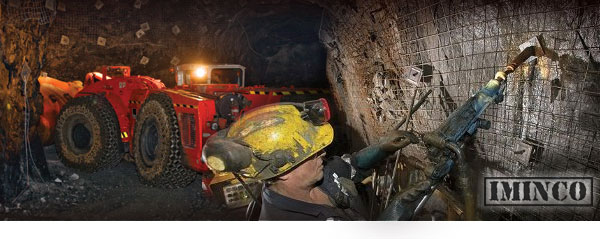
Jobs in the mines a few years ago were easy to get. Mining companies struggled to get people to do the most basic Australian mining jobs, so they put it out there that ‘big money’ was on offer and that was a game changer.
We all know how swarms of workers descended on mining camps in Western Australia, New South Wales and Queensland in search of their fortune.
However, true to the saying ‘nothing lasts forever’,� the Australian mining industry suffered the impact of a global downturn in demand for the very same raw materials that were being dug out of the ground by hoards of workers.
Supply and demand
Mining in Australia suffered one of the most basic of business fundamentals and that is the challenge of ‘supply and demand’. When there is a huge demand for a product, the suppliers of that product in a lot of ways can control the price of the product, creating a buoyant environment. This is what happened in Australia and the demand came predominantly from China.
So here we are in 2014 and the mining sector in Australia has gone through a major transition where jobs were shredded from projects, mining companies and contractors have smartened up and now focus on productivity and costs management.
The demand for raw materials coming out of Australia has slowed, plus there has been increased competition from other nations who are competing for the same business.
Iron ore was the biggest earner for Australia in terms of exports and as such, that’s where most of the jobs were.
Which bring us to the reason for this article.
In today’s highly competitive�Australian mining jobs market, everyone has to lift their game. Waiting for jobs to be advertised on jobs boards is really not the best way to find a job these days. The internet allows volumes of information to be made available at our fingertips, there are ways to ‘sniff out’ mining jobs before anyone else ever hears about them.
Finding these jobs means becoming a bit of an online detective.
Follow the example that’s coming up and it will open up many more opportunities for employment in the mining industry in Australia.
Okay let’s get started”�
The first thing that we need to realise is that discovering information is one of the keys to getting a job in the mining industry.
If you’re not keeping up to date with the latest mining news, then employment opportunities will continue to evade your radar.
This is one of the most common problems with many people – they don’t understand that getting the right information and building knowledge about the mining industry can be very helpful.
So . . . how do you keep up to date with mining news?
Good question.
One of the ways is to subscribe to iMINCO Project News. This is a weekly news service supplied free of charge to help people just like you figure out how the mining industry works.
Start to gather mining news from the various mining news websites too . . . as this is a also great way to build your knowledge.
Enough of the explanation . . . here’s the example
We talked before about ‘supply and demand’ which is a critical factor for mining jobs in the long term.
Understanding the mining industry means not only learning about the nuts and bolts of it, it also requires additional investigation into what the world demand is for minerals like gold, silver, copper, palladium, platinum and nickel.
Australia has an abundance of these minerals, so the first step on the search for a mining job, is to find out which minerals are in demand now and in the future. It’s never easy to predict the future of commodities, however, this is a great place to start.
As iMINCO is a mining information company, we have many sources of information. One such resource is mining.com where a recent article on the 2014 commodities triggered this article.
This report highlighted the upturn in the commodities market in 2014 and more importantly indicated which metals were in demand now and especially the future.
One such metal was Nickel.
“did you know nickel is currently trading at $19,000 a tonne?”
Leading the way in the increase in prices was nickel, delivering a 37.14 percent return, followed by palladium (17.70 percent) and gold (10.90 percent). Nickel also saw the largest gain from last year, climbing more than 55 points to settle close to $19,000 per metric tonne.
Poorly performing metals were lead and copper.
How to pick mining jobs of the future
As nickel was the best performer and demand is still strong, then it makes sense that mining jobs in nickel mining could be a good bet for a secure future. Many people simply pick a mining job because it appeals to them in the short-term – not because of the opportunities it creates for the future (very important!).
What’s next?
In part 2 of this article, we uncover where the nickel mines are in Australia, which mining companies and contractors are doing the mining and how to research the industry, find jobs and make the first contact.



